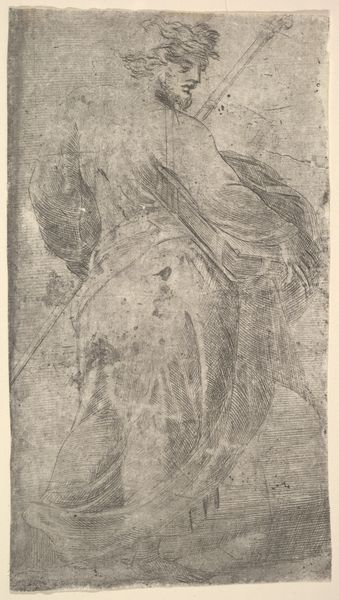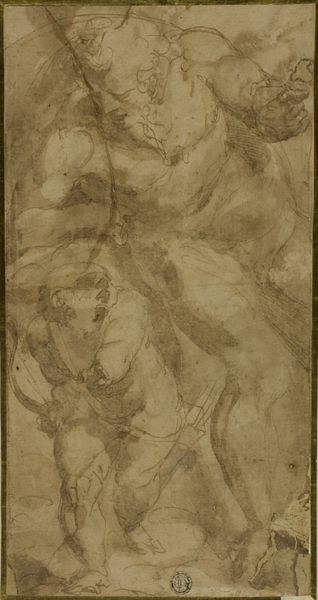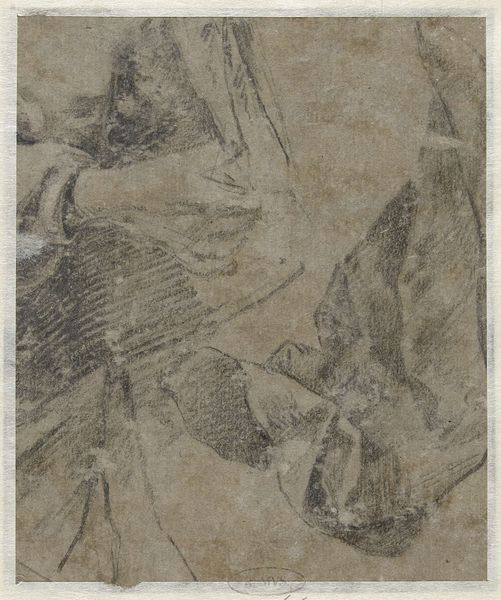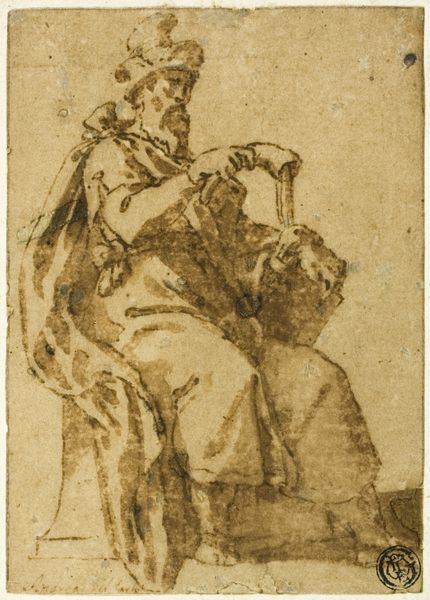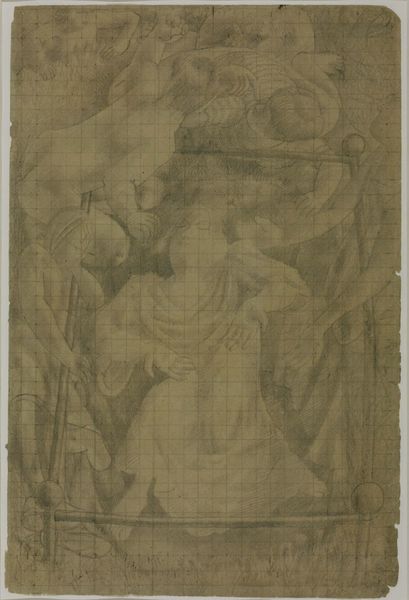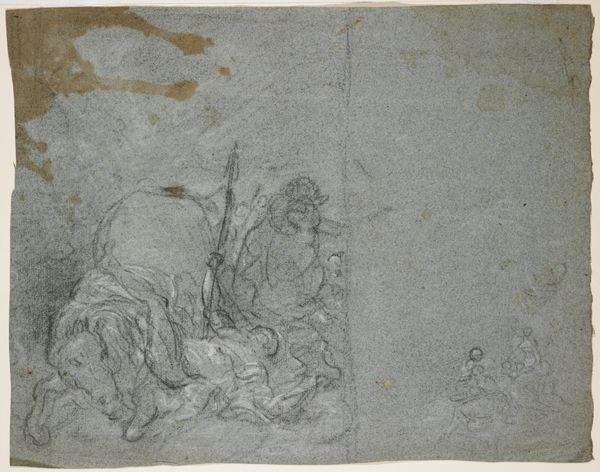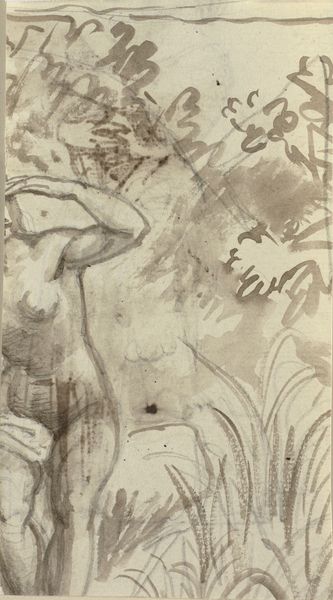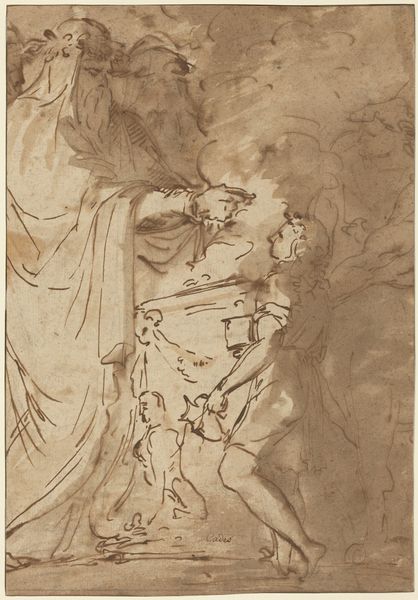
drawing, pencil
#
drawing
#
landscape
#
charcoal drawing
#
figuration
#
pencil drawing
#
pencil
#
italian-renaissance
#
early-renaissance
Copyright: Public domain
Editor: This is Jacopo Bellini's "The Agony in the Garden," created around 1450, a pencil and charcoal drawing. It has an ethereal quality, almost like a faded memory. What do you see in this piece, especially considering its historical context? Curator: This drawing, created during the Early Renaissance, speaks volumes about the construction of faith and power. Consider the figure of Christ kneeling, juxtaposed against the sleeping disciples. Bellini uses the landscape to mirror inner turmoil. How does this composition contribute to the narrative of sacrifice and obedience within a patriarchal structure? Editor: I guess I hadn't considered the power dynamics inherent in the scene. It’s always felt like a straightforward depiction of Jesus’s struggle. Curator: Exactly! The image operates within a specific socio-political context. The Church used these representations to reinforce obedience and piety. Who benefits from depicting Christ in such a submissive pose? Think about the role of women during this period, often relegated to positions of subservience. Can we draw parallels? Editor: So, you're saying that even a seemingly religious scene can reflect and reinforce broader societal inequalities? The fragility depicted normalizes that power imbalance. Curator: Precisely. Bellini’s work invites us to consider how art can serve as both a reflection and a reinforcement of dominant ideologies. How does understanding the artwork affect your appreciation, knowing its societal function? Editor: I definitely see it differently now. It's not just about faith, it's also about the ways faith was used to uphold a certain kind of social order. Thank you! Curator: And thank you! By questioning the intended narratives of these works, we reclaim agency and bring art history into a contemporary dialogue.
Comments
No comments
Be the first to comment and join the conversation on the ultimate creative platform.
